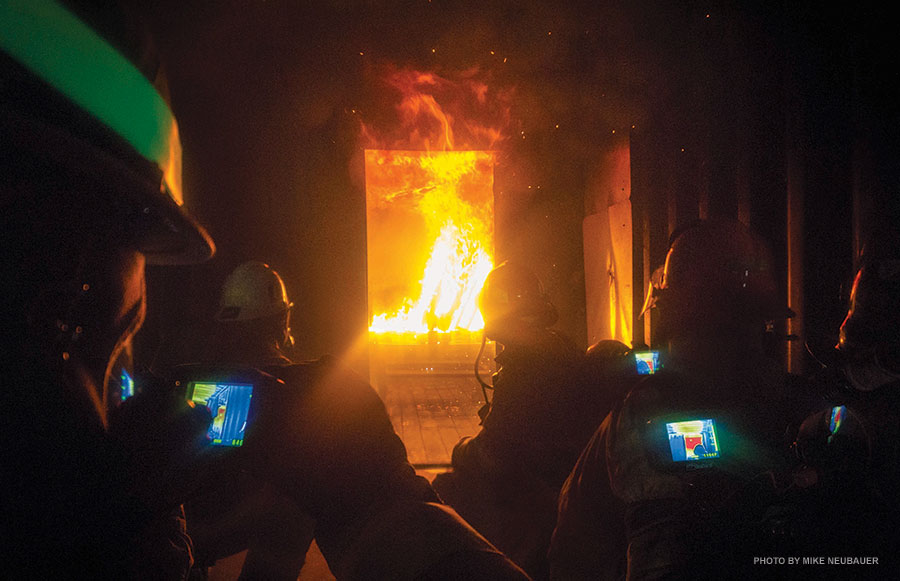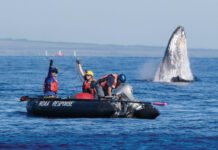
“I studied harder through my six months of recruit class than I ever studied in four years of college,” recalls firefighter Jon Duncan, who works out of the Kahului station. “As soon as you step into the station and that tone goes off and there’s an actual emergency, everything you’ve learned in training is racing through your head. Every single call is a call you’ve been training for your entire career.”
Battalion Chief Amos Lonokailua-Hewett says that no other fire department in Hawai‘i has been able to match the number of disciplines and recurring training that MCFD conducts annually. So high is the caliber of Maui County’s program that colleagues from across the state travel here to hone their skills.
“We have a lot of talent within our department, so we created a cadre system to identify stars in certain disciplines and bring them forward to lead the training,” Lonokailua-Hewett explains.
Pokini is a prime example. He was an early adopter of tow-in surfing when the sport began in the late 1990s. When big-wave contests are held on Maui, organizers call on Pokini and his Jet Ski to keep the surfers safe.
“I still have my personal Jet Ski that I use during my free time,” says Pokini. “I’m teaching something that I love to do on my day off.”
Like Pokini, Kahului firefighter Pete Napolitano brings his off-duty passion into the workplace. Napolitano leads rope rescue training, and has traveled across the U.S. and Canada for advanced study, relaying those skills to firefighters here. Ropes courses weren’t being offered when he joined the department in 1991, but it’s a specialty he’s relied on to save lives throughout his career.
Napolitano recalls a time his crew was called to Polipoli Springs State Recreation Area at around 1 a.m. for a man who had fallen off a seventy-foot cliff.
“The only way to recover him was to use a rope rescue system,” says Napolitano. “He fell head first, so with the injuries he had, if we didn’t get to him, he probably would’ve died.”
Scaling a cliff in pitch darkness, with just flashlights to check the rugged surroundings, is as challenging as it sounds. Napolitano says, “That’s where the training pays off. “We’ve held rope rescue training at night, and pulling something like this off in the dark comes down to knowing your equipment,” he says. “We show up to work and anything can happen at any time, and we’re expected to solve any problem. The nature of firefighters is that they’ll do whatever it takes to get the job done, but it all starts with being prepared.”






Aloha Paul, Please contact the Fire Department directly with your request. Here is a website link: http://www.co.maui.hi.us/1460/Fire-Public-Safety and here is an email address: fire.dept@co.maui.hi.us.
Thanks for reading!
Hello. I am a 74 year old retired US Marine. I live on Cape Cod. I assist with Cape Cod cares for the troops and Cape Cod thin blue line. My hobby is collecting law enforcement and fire patches and emblems. Was wondering if possible to get any patches from your department? Thanks in advance.